Southwest Harbor Firefighters Strained But Positive as They Continuously Put Community Above Self
Department held open house, looks to future
The Bar Harbor Story is generously sponsored by Side Street Cafe.
SOUTHWEST HARBOR—Fire Chief Tommy Chisholm rocked back a bit on his heels during his fire department’s open house on Saturday, surveying the spotless fire station with its trucks on display during the drizzling morning. There were cupcakes in the side room, hoses to try out, and enough plastic hats for everyone. His own family was in the back of the bay waiting for him to get a moment to say hi to them, too.
Chisholm, like most of the people in the department, works at least two jobs, depending on how you’re counting. He works more than fifty hours as a full-time lieutenant and paramedic for Bangor. There he manages, leads, and oversees a large group of members that deal with 12,000 calls a year.
Every week, Chisholm works 70 hours in the firefighting profession.
“I just cannot be in two places at once which has proven to be tough on me, my family, and the members of the SWHFD at times. Many of the departments key vested members work the same hours juggling SWHFD with their other job(s) and responsibilities,” he said.
And Chisholm spends a lot of time worrying—worrying about recruiting more volunteers, worrying about keeping people and their property safe, worrying about taxpayers, his neighbors, and how anything that the fire department might ask for could impact their finances.
“As someone who has grown up in Southwest Harbor and has both ties and family throughout, I juggle the moral dilemma of asking for more (as it directly comes out of my own pocket thru taxes) while too ensuring that the services needed when asked are competent, well rounded, and available to those who need it—my closest friends and family included. In my position, it can be even more stressful to know that there potentially is no one there to help when asked than it is to be the person there rendering assistance. This is felt with the majority of the members who are well vested Southwest Harbor residents as well,” Chisholm said.
SURVIVING
According to a Maine Monitor article, “the closure of ambulance services and lack of EMS responders around the state has prompted other departments to consider training firefighters as medical personnel.”
Firefighters throughout Mount Desert Island have helped with medical calls, CPR, search and rescue, drownings, accidents, traffic control, lift-assists, and more. It’s not just fighting fires any longer.
“As many of our members have stated, ‘we all need to work together’ to meet not only the fire departments, but all essential emergency service’s needs and their missions. This methodology is something seen not only across our state, but nationally,” Chisholm said. “As our town (Southwest Harbor) specifically has grown and evolved over the past several years, the Fire Department has worked hard to meet that need/demand. By taking a mindful but proactive approach, I with the support of our members, town leaders, and most importantly our community, have taken small steps to keep our small fire department up and running at the lowest cost while too trying to ensure that if someone calls for help, someone show’s up and in a timely manner.”
Members began to be compensated for the hours they work on calls. That began in July 2023. Now, they’ll also get a stipend for hours worked on monthly training. That began after July 2024.
“But money to our deserving members is just part of the stop gap. Some times there just isn’t enough hours in the week as many members have said. As the number of locals active on the Southwest Harbor Fire Department slowly decline due to many contributing factors (housing, members time, call volumes, abilities to volunteer etc.), increasing training requirements and the need for competent personal in many areas of the fire service has too grown with it,” Chisholm said.
To make things more difficult, the state historically doesn’t keep track of firefighters via a licensing agency.
“Our problem is we don’t know the numbers, and now we’re in crisis mode,” Lt. Gerry Gay, the first district vice president of the Professional Fire Fighters of Maine, told the Monitor. “Had we known the number of firefighters (in the state), we could have been on this a long time ago.”
It is estimated that volunteers mostly or fully staff 95% of fire departments in Maine. So, the question becomes: how do you keep them, how do you encourage them to volunteer and train, or how do you transition away from a volunteer system.
To try to combat loss of volunteers, the Southwest Harbor department has tried to integrate full-time, part-time and per-diem personnel to ensure that the town has people ready to respond at a moment’s notice.
“This has helped tremendously while not ‘short changing’ the hard working call members at the same time,” Chisholm said.
Starting with day coverage (7 a.m. - 5 p.m.) first, the department has 1 FF/EMT on duty seven days a week. It has one full-time firefighter/EMT that works four ten-hour days, a part-time chief that works two 10-hour days and the Sunday position is per-diem and open to any qualified member of the department(started July 2024). This builds buy in for everyone.
“It has helped immensely ensure that calls during working hours when almost all of our members are now at work and/or out of town, get answered and don’t go un-resolved. It also builds in a means of upkeep to the 100’s of different things we are responsible for as a fire department such as equipment, apparatus, and the facility itself,” Chisholm said.
But nights in Southwest Harbor are becoming more difficult and the workload is starting to take its toll.
“With many of our members working two-three jobs, night-time availability too is dropping off,” Chisholm said. “While not happening regularly, yet, we have noted times of little to insufficient responses for emergencies that warrant it.”
The town of Southwest Harbor has over a billion dollars worth of property value now (one of only five in the county), and compared to the other towns with that type of assessment, specifically here on MDI, it has substantially the lowest budget ($287,408.00) and the least amount of guaranteed staffing than say MDFD and BHFD and even Ellsworth.
“The SWHFD has been successful at times in recruiting new members, but the amount of local people willing to put in the time and training needed to bring them up to par is challenging on not only them, but the limited personnel we have to see it successfully done,” Chisholm said.
“The fire service, as a whole, is very much changing,” Chisholm said. “The types of calls and the frequency at which fire departments are asked to tend out is growing, and at times, quite rapidly. Fire Departments are often referred to as the ‘caretakers’ of their communities. They are there to always help and try and make things better/safer for everyone in times of need. EMS too has become a more integrated part of many fire departments then in years past, now following successful model types like Bar Harbor then ever before with the SWHFD being no exception.”
Chisholm became a volunteer firefighter when he was eight. His dad, Sam, was the chief from 1995 to 2014. In 2018, Tom was appointed into the chief’s role. He’d been deputy chief, which is Colton Sanborn’s title now. Chisholm became chief after Jack Martel resigned. Martel started fighting fires in the town in the 1970s and he was there on Saturday as well.
THE OPEN HOUSE
I feel the Open House Saturday was a success even with the poor weather that may have been a deterrent for some. I feel its important to be transparent with all that the FD does and provides to it community. By showcasing the people and equipment it also gives the public the opportunity to ask questions and engage in what is in place to take care of them in an emergency. This is key I feel. The Southwest Harbor Fire Department proudly owns all the apparatus and equipment we currently have with the exception of the building it self that is nearing its pay off in the next several years. We have taken very well care of the things we were allotted by the town and its taxpayers and continue to make it all work for as long as we feasibly can. 30 year life cycles for instance with a half life refurbishment on all our fire apparatus is an example of keeping new purchases low and as cost effective as possible.
The fire station was built in 2006 and has six bays that visitors roamed around. Children climbed into fire trucks. One boy explained where the brakes in the fire trucks are, where the hoses attach, how the firefighters strap in. A bunch of other children and an adult followed him as he explained more and more, winding in and out of the 14'x14' entry doors as he led them along.
According to the fire department’s website, “The station was also designed to serve as an emergency shelter for the Town and adjacent offshore islands. To meet this role, a 200-amp emergency generator and facilities to feed and house 200 people were also included.”
FUTURE GOALS
Just because it’s a challenge doesn’t mean Southwest Harbor’s Fire Department isn’t up to it. It’s faced challenges before; it’s part of the profession.
Chisholm has goals. One is to work toward ensuring that someone (one person at the simplest) is at the firehouse seven days a week, twenty-four hours a day, while continuing to work diligently on keeping a well rounded and as robust as possible call force to supplement that staffing when needed.
It would be a smaller version of what Bar Harbor, Mt. Desert, and other state fire departments are doing, and Chisholm thinks it seems like a compromise to keeping it affordable.
“Slow, mindfully laid out plans seem to work best and do not aggressively impact people,” Chihsolm said. “Southwest Harbor has been unique in the fact that the United States Coast Guard is stationed here, and has been an extreme resource for things such as staffing.”
But the Coast Guard station has also been facing housing issues, pushing its members to live further out of town and often off the island. Some live as far away as Bangor.
“That causes them to not able to be called upon as was the case for so many years,” Chisholm said. “This has definitely been another big blow on our department’s staffing as we currently do not have any USCG members active within the department.”
But it’s the community, Chisholm says, and the members of the Southwest Harbor Fire Department that make it successful.
“You can have the nicest equipment, facilities, and apparatus money can buy, but if you don’t have the hard working, committed people to make a difference when it matters most? It’s a moot point,” he said. “Southwest Harbor has proven that good people taking care of each other is a noble way of taking care of its own and their investments. There most certainly is a pride that comes with it and is evident within the Southwest Harbor Fire Department.”
Photos: Carrie Jones and Shaun Farrar/Bar Harbor Story
LINKS TO LEARN MORE
TO CONTACT THE FIRE DEPARTMENT:
For emergencies please dial 911
Fire Station Business Number 244-5233
Fire Station Fax Number 244-5552
Southwest Harbor Police & Fire Dispatch Number 244-7911
Email us swhfd@swhfire.org
Please do not use the business phone number to report an emergency.
If you’d like to donate to help support us, you can, but no pressure! Just click here.
If you’d like to sponsor the Bar Harbor Story, you can! Learn more here.









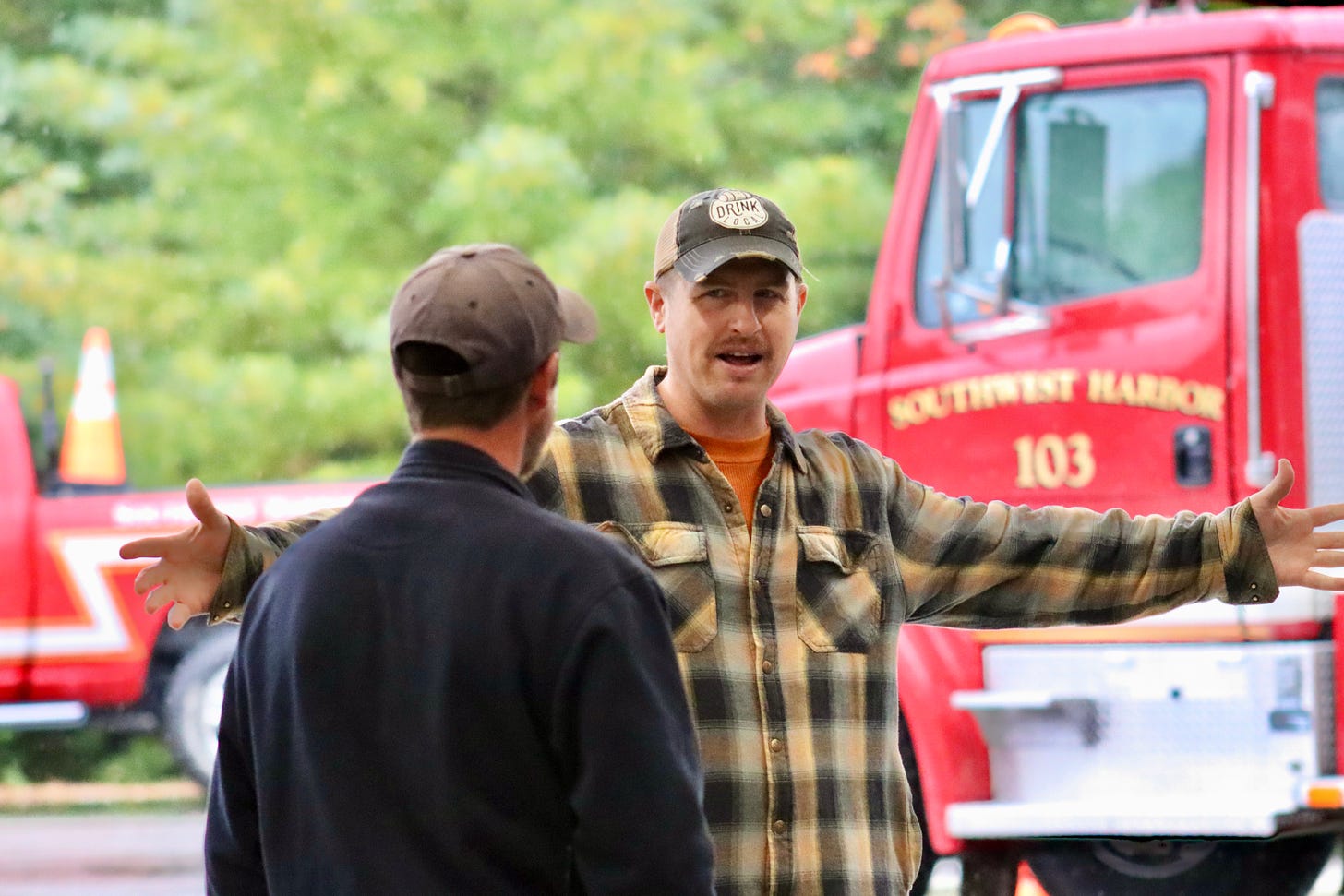


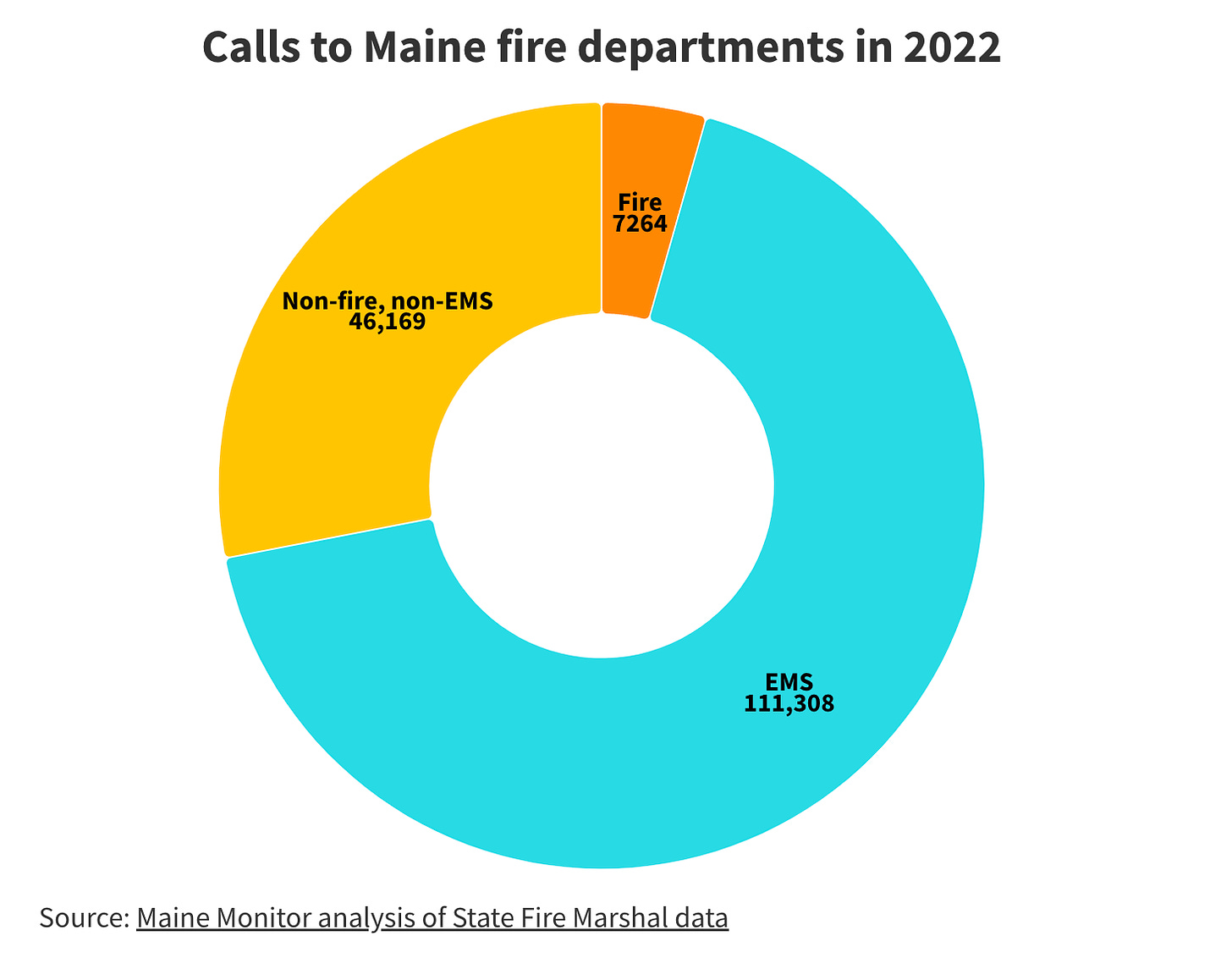


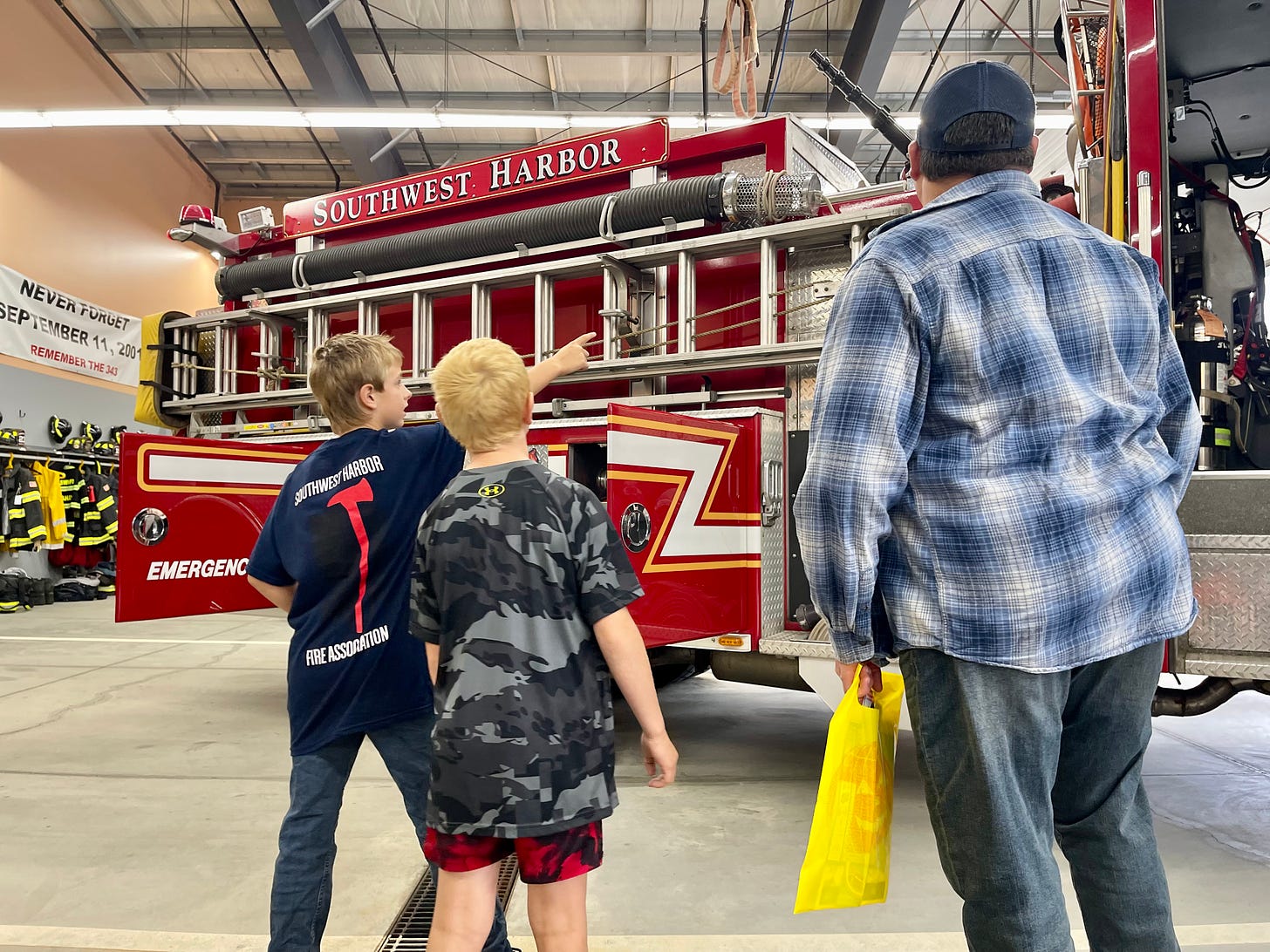
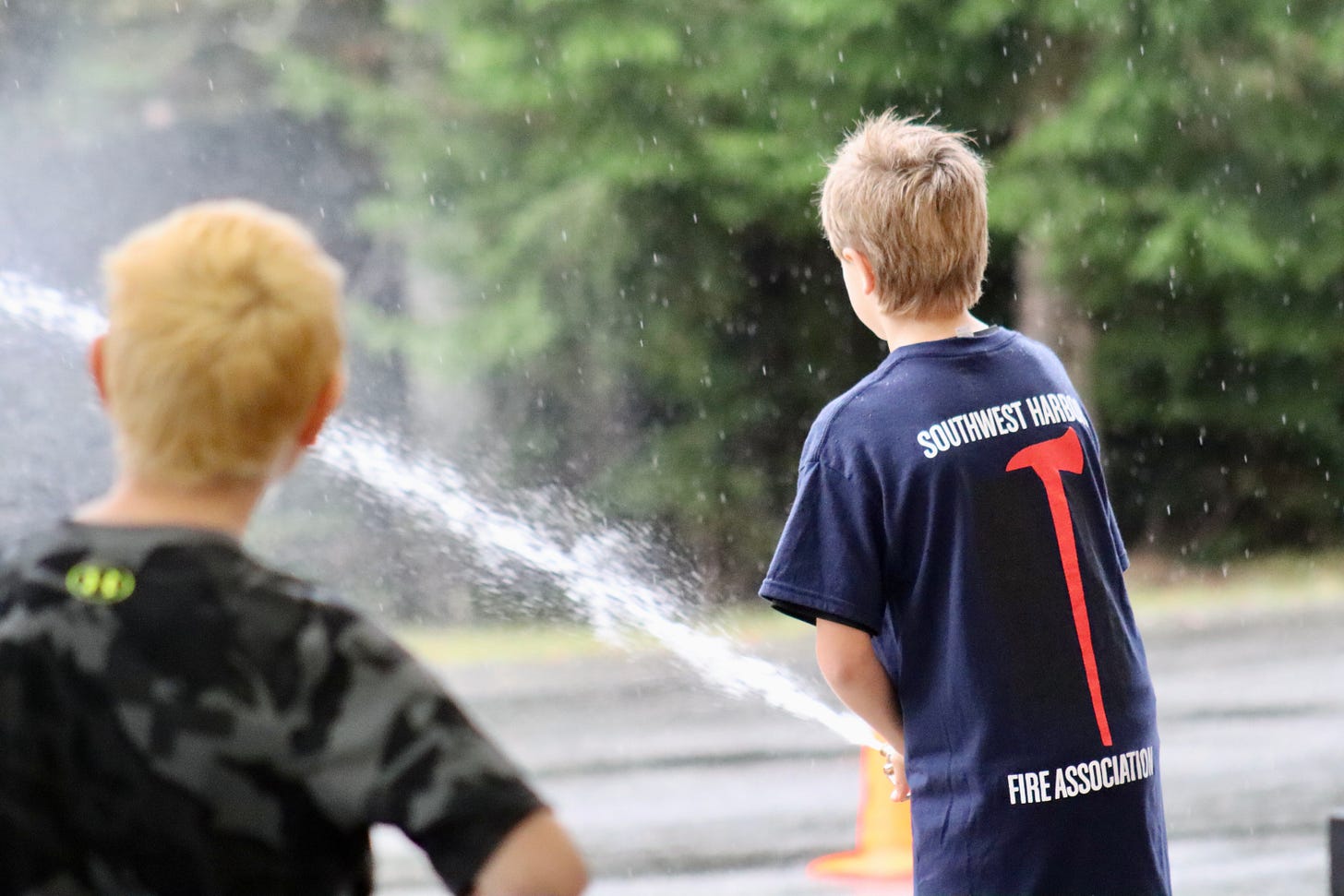
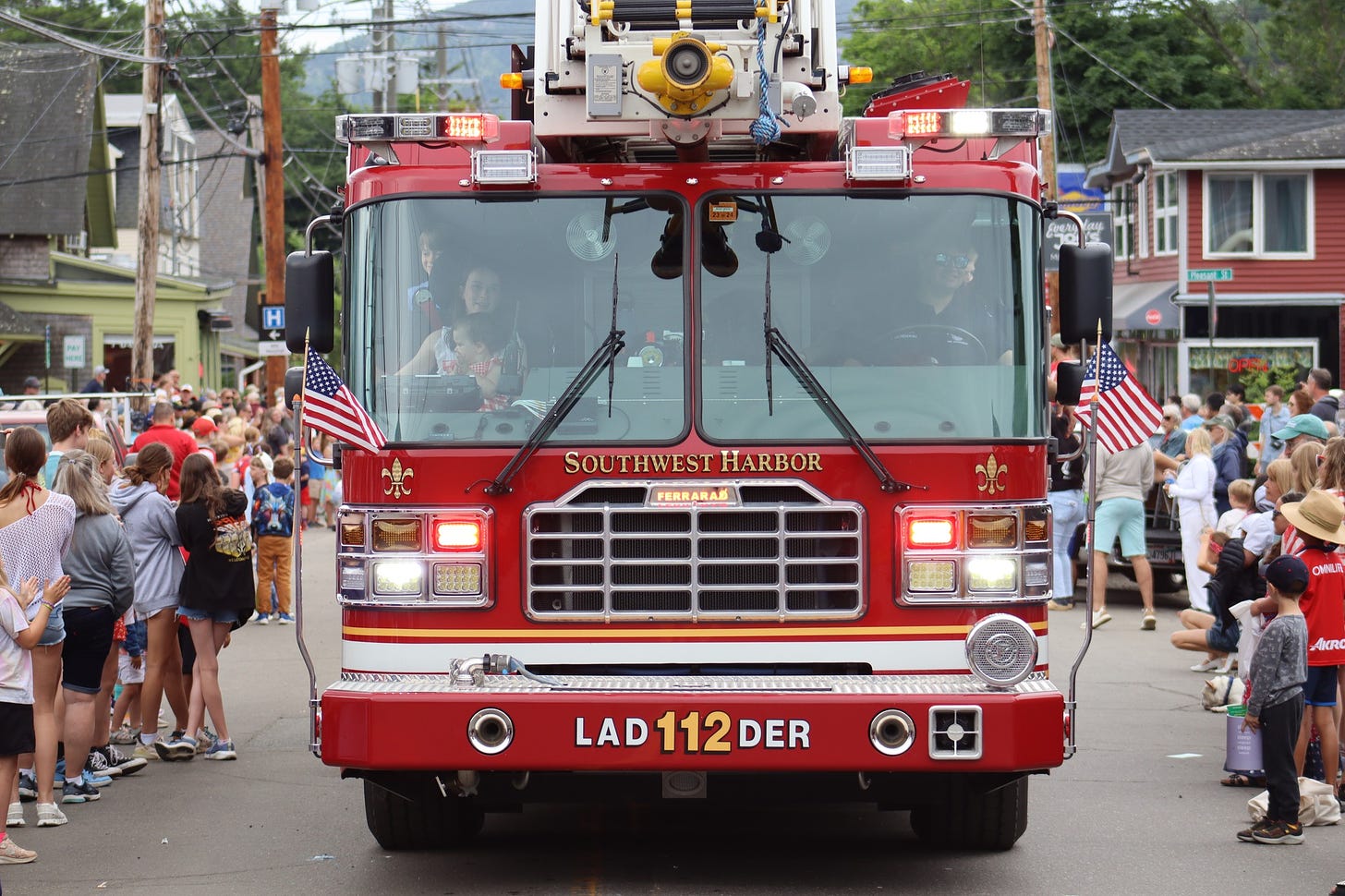
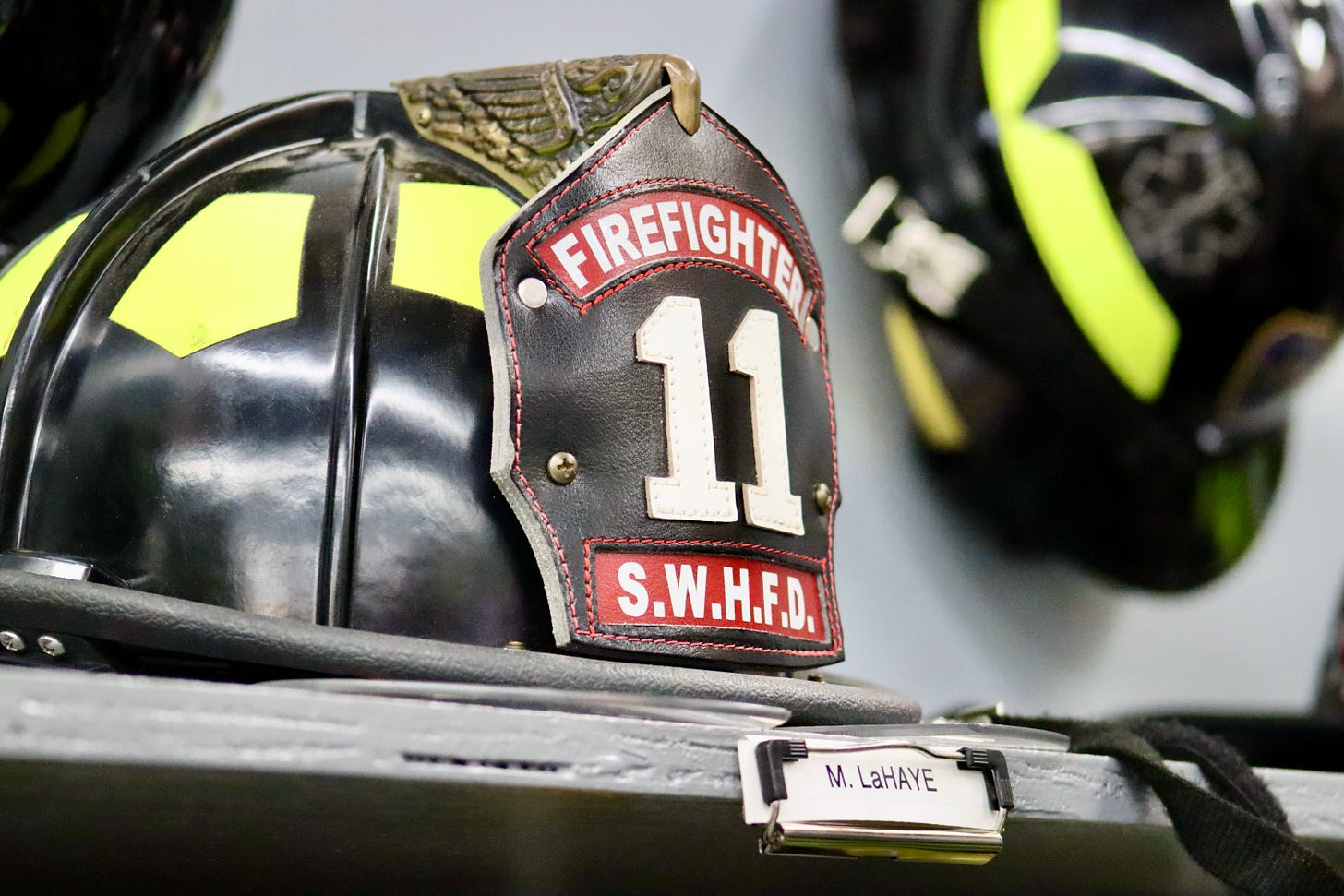

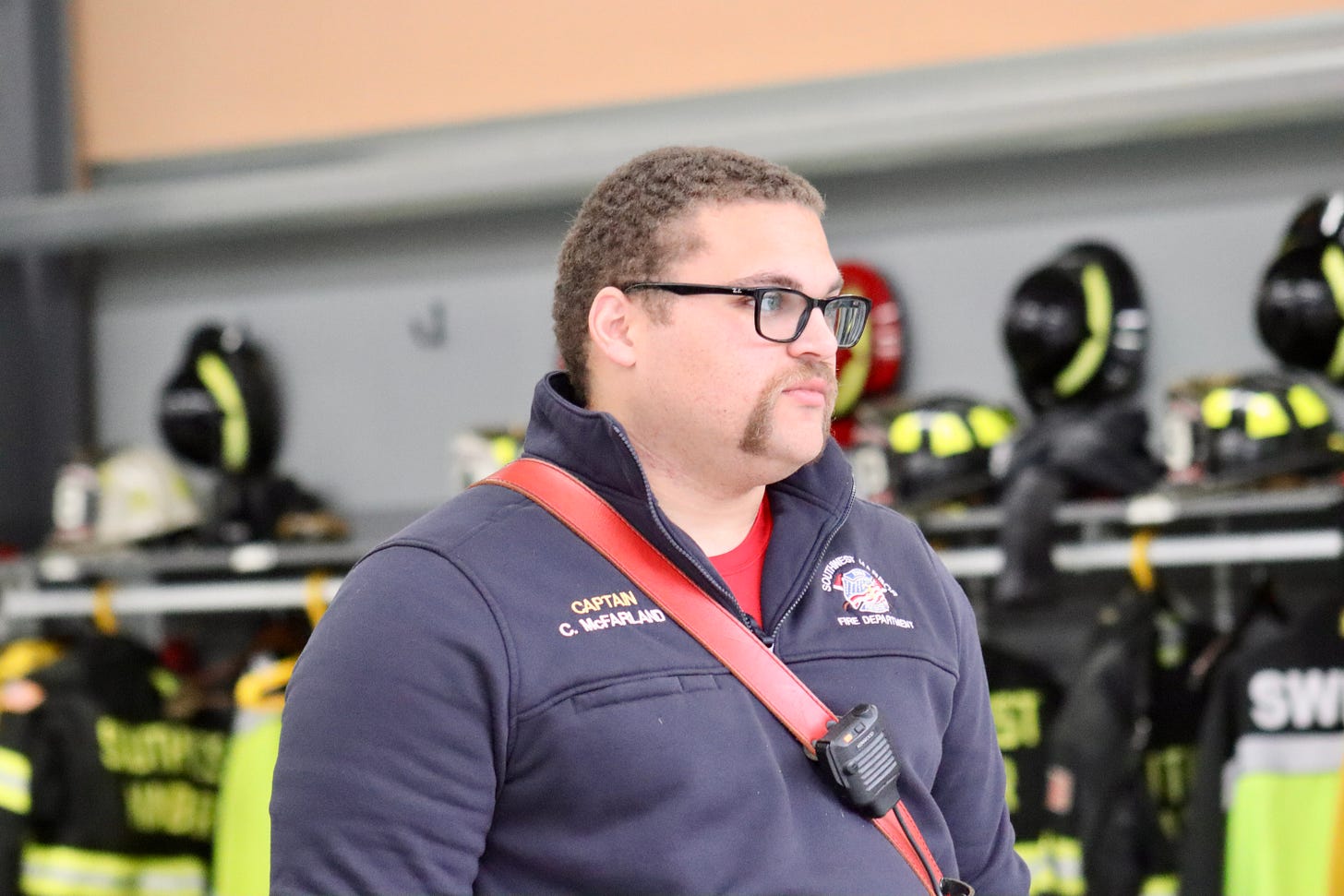

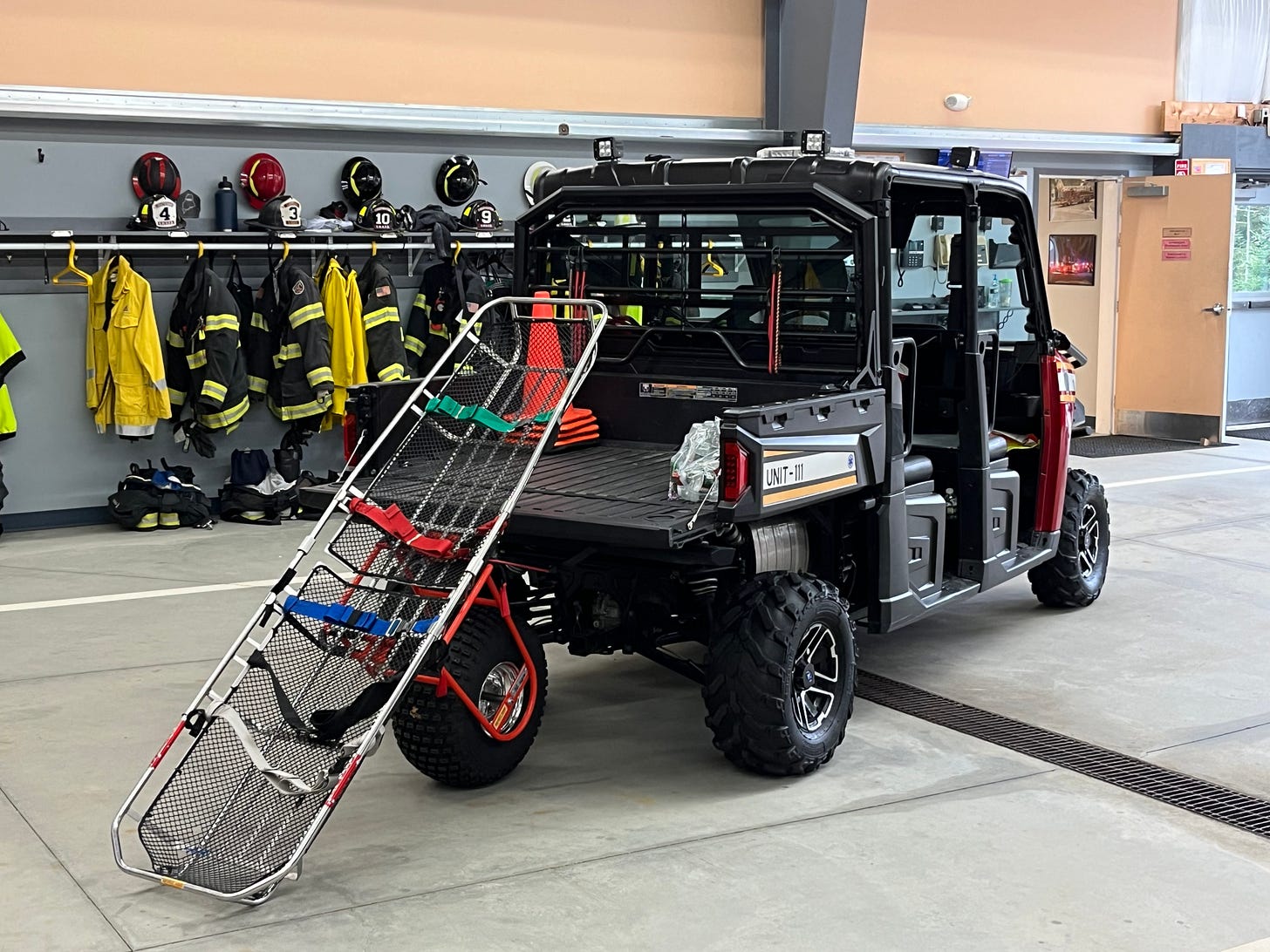
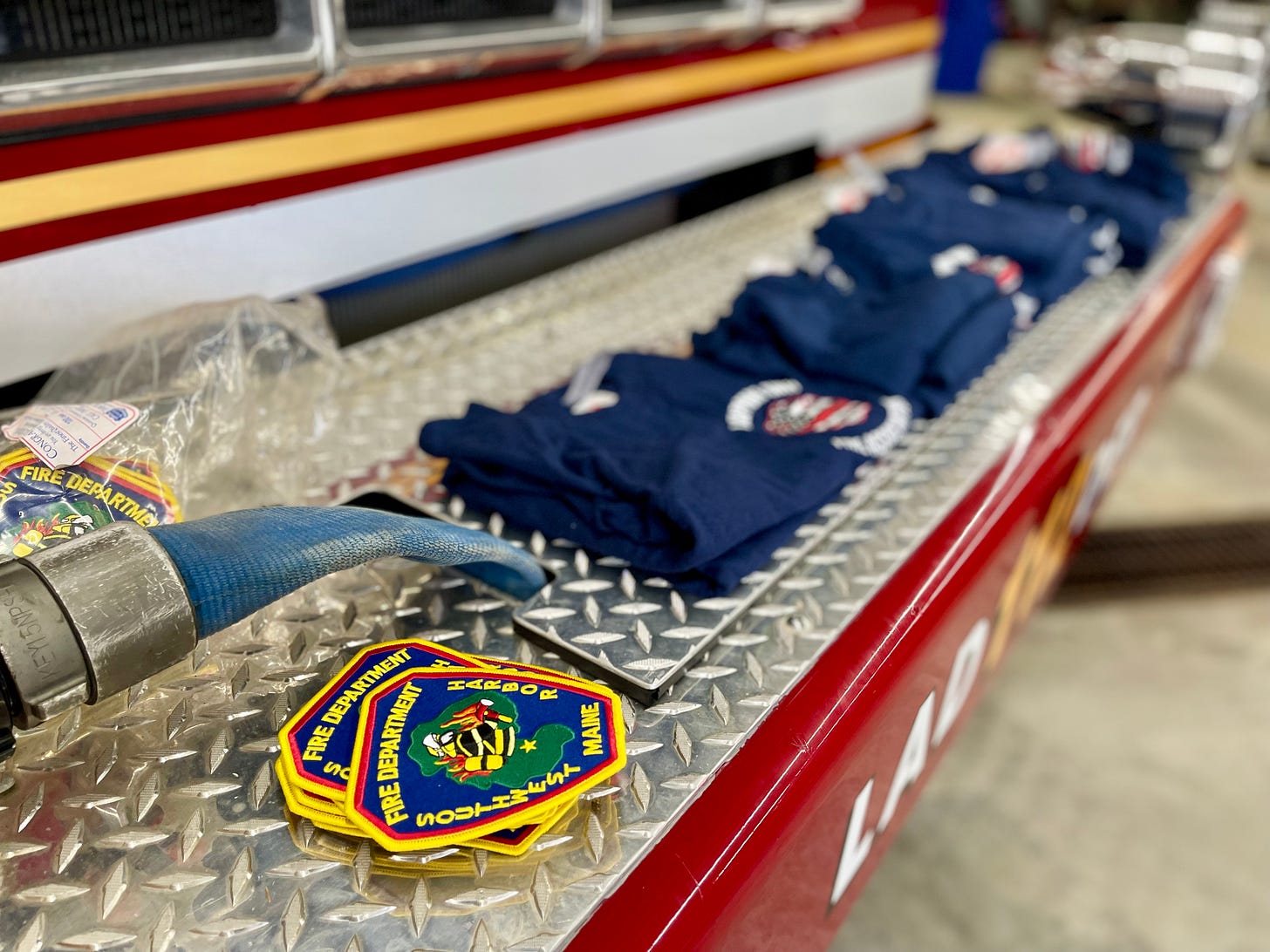

I was a volunteer Firefighter for 13 years with an unpaid all-volunteer fire department. In my day you learned on the job and from the older members. I also took classes at different times at a Fire Academy in Belmont, New Hampshire. It was some of the best days of my life to give back to my community. Today it is totally different with local and state fire academies for volunteers to learn the art of firefighting and today most departments pay a stipend to their volunteers. I would urge anyone who has some time to give to consider volunteering for your local fire department. The enjoyment you get from helping your community and being part of a Brotherhood will reward you many times over.